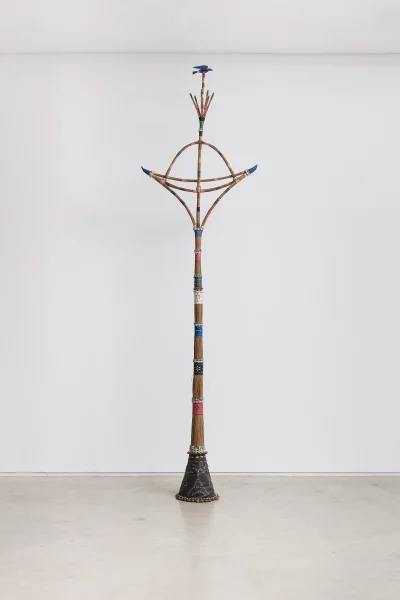Mestre Didi

It was in the role and with the responsibilities of high priest that Mestre Didi learned to make sacred objects. As an artist priest, writes Alexandre Araújo Bispo, Mestre Didi's double practice comprised two sets of conventions, the objects constructed in his role of spiritual leader not to be confused with the sculptures that compose the artist's oeuvre:
The mythical sacred, other than being a subject present throughout Mestre Didi’s poetics, must not be confused with the sacred of Candomblé. In this way, his art works exhibited in exhibitions stand apart from those reserved for religious use. A ritual Xaxará or Ibiri is first magnetized, that is to say, made sacred with substances that transmit energy from nature – axé – like dende oil, plant leaves, honey and, not to mention, spells – ofó – which are said as prayers so that the object achieves the expected goal. Consequently, that which governs an artistic object, even if made from the same materials, is that it has not been produced to be used in a terreiro but rather envisioned for exhibitions...never confused with religious artefacts, albeit reminding us of the desired and necessary aesthetic beauty for the full experience of Candomblé.
– Bispo (2018)
b.1917, Salvador; d.2013, Salvador
Mestre Didi lived as a priest, a scholar, and an artist. He grew up in an environment committed to both craft and spirituality – his father practiced as a tailor, his mother an ialorixá (priestess) of the Ilê Axé Opô Afonjá terreiro of their family's House of Worship. From an early age, initiated into the cult of Egungun, Mestre Didi studied Candomblé rituals, learning the Yoruba language. Upon visiting the kingdom of Ketu (which includes the territories of Nigeria, Benin and Togo in West Africa), he received the title of high priest. Among his scholarly works, Mestre Didi published his first Yoruba-Portuguese dictionary in 1946, which pioneered the creation of the department for the study of the Yoruba language at the Federal University of Bahia in 1960.